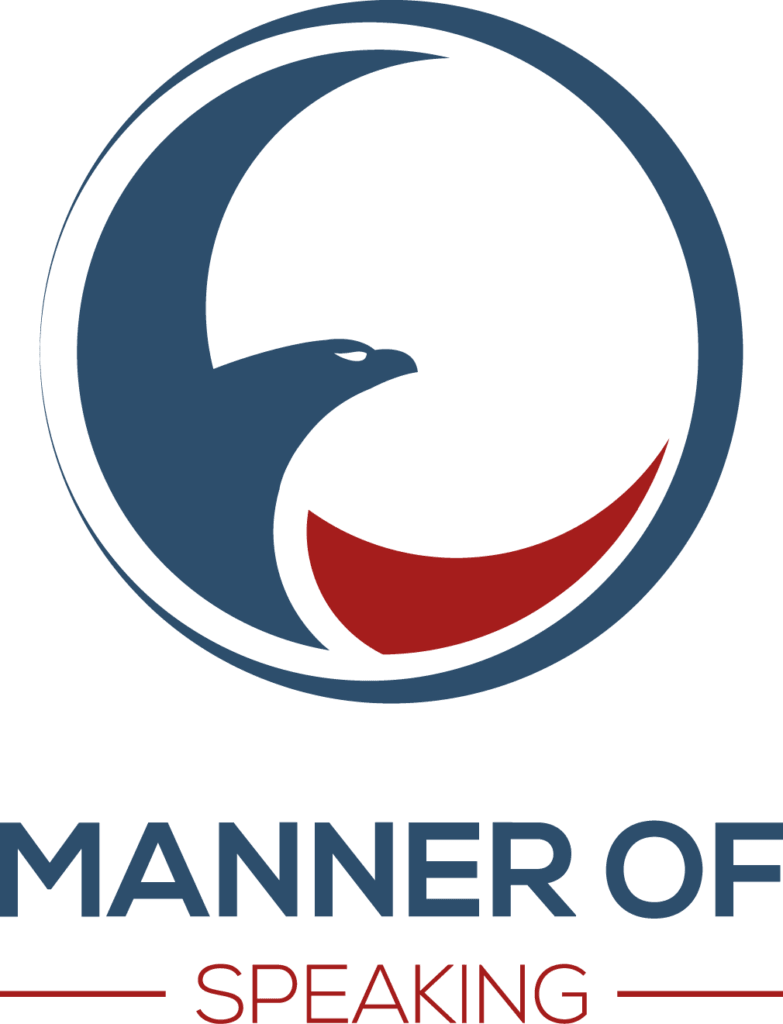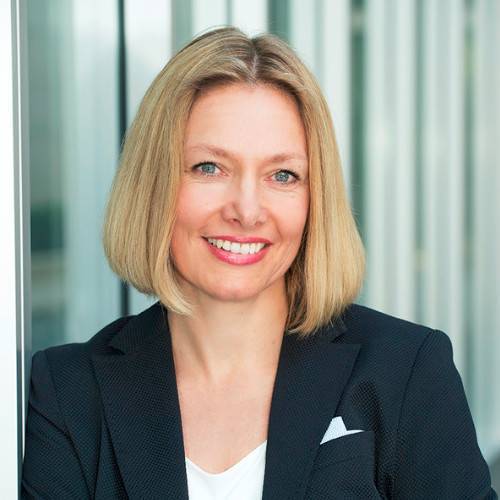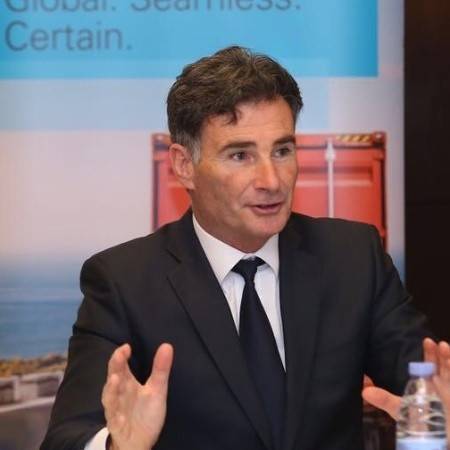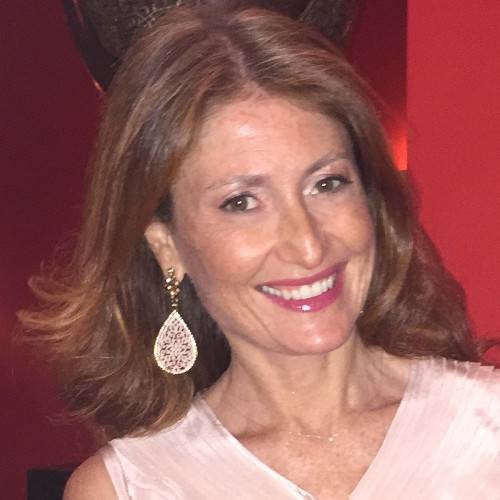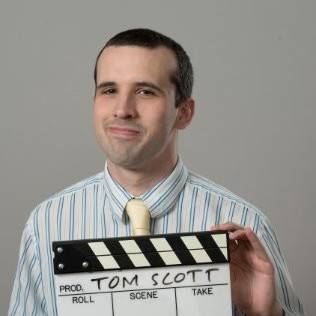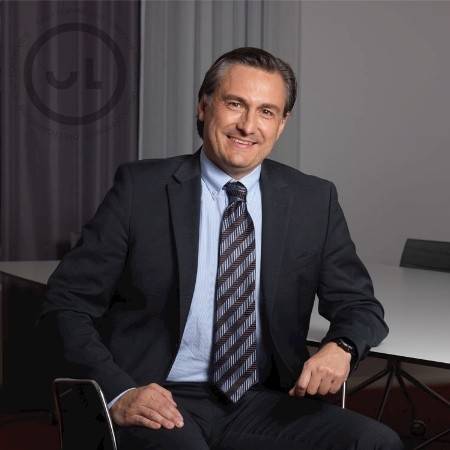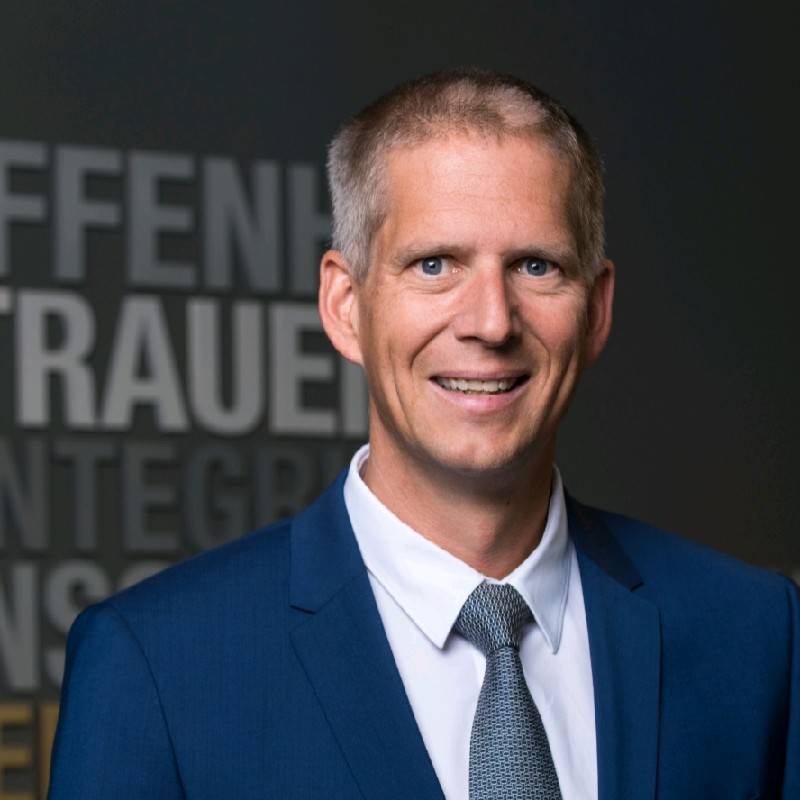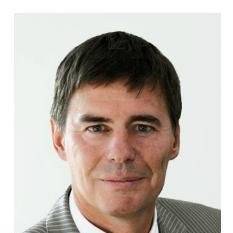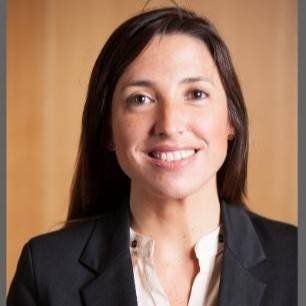
Sabyasachi Sengupta (Saby) is the 2025 World Champion of Public Speaking. He is also my friend. And I had the rare privilege of coaching him on his world championship speech.
Over the course of my career as a professional speaker, I have analyzed dozens of speeches, and you can read many of those analyses here.
In this post, I share an insider’s look into what went into building and delivering a world championship speech. It is detailed, and if you are considering entering a speech contest, I hope that you find something useful here.
The video of the speech is below. I encourage you to watch it and then read the analysis that follows.
Background to the speech
Choosing the speech for the Finals
When Saby learned that he had made it to the Semifinals, there were about two months before the event. During that time, we worked on his Semifinal speech, but we also had to come up with a speech for the Finals if he were to make it that far.
He ran a couple of ideas by me, and they were OK, but they weren’t anything special. He even shared a draft script for one of the options and, to be honest, it wasn’t that inspiring. I knew it, and Saby knew it.
Less than one month before the Finals, Saby was still struggling to come up with an idea for his final speech. We had a call, and during our discussion, he mentioned a speech that he had given 11 years ago at a conference in Lyon, France. As it turns out, I was at that conference and had even given him a few tips on that speech. (Sometimes life has a funny way of bringing us full circle!)
Saby said that it still resonated with him, and he sent me a draft of the script. The draft was rough and needed polishing, but when I read it, I immediately felt the difference. I could see the diamond in the rough that this speech was. I knew then that we had a solid foundation on which to build.
Your speech must resonate with you. It has to mean something deep down. Only when you really feel it can you give a speech that will hit the mark.
Humour
I’ve studied a number of speeches in the finals of the World Championship of Public Speaking. Often, they deal with serious subjects and serious events that have happened in the life of the speaker. There is nothing wrong with such speeches; they are important.
However, I have noticed that the speeches that tend to do well are ones that have more than the average amount of humour. Humour is uplifting. Humour is powerful.
The legendary John Cleese of Monty Python has said that if you can get the audience to laugh, you get them on your side. And if you get them on your side, they will be open to your ideas.
So, Saby and I made a conscious effort to add as much humour as possible. Yes, we needed to include serious moments. But we decided to lean heavily on the humour because we knew that it would be powerful.
In the end, by my count, Saby got 30 laughs and three applauses in the middle of his speech. That works out to a laugh every 15 seconds. That’s a lot!
Timing
During our practice sessions, we always timed Saby’s speech. Timing is critical because in a Toastmasters contest, the speaker can only speak for a maximum of 7:30. If you go even one second over time, you will be disqualified.
Saby consistently came in around 6:00 or 6:05 during our practice sessions. That was important because we knew that if he made it to the Finals, he would be speaking in front of 1,000 people. And when 1,000 people laugh, it takes time.
In the end, Saby finished his speech around 7:20, which means that more than a minute of time was taken up by the laughter!
When planning to deliver a contest speech, you have to allow sufficient time for laughter and other audience reactions.
Title
Although it’s not essential to have the final title while working on the speech, ultimately, you need to pick one. The title should do the speech justice. It should hint at what is to come without giving it away.
The working title of Saby’s speech was Dream Too Far. Neither of us was especially thrilled with it. I said that if he was going to stick with it, we needed to add the word “a” at the beginning and make it A Dream Too Far.
Then I started thinking about how we could work the word “nod” into the title. The Indian head nod is so important in the speech that having it in the title would be a great way to emphasize it even more.
And so, on our Google Drive document I wrote, “I was thinking about how we could build the word ‘nod’ into the title.” To stimulate our thinking, I asked Saby if he was familiar with the expression “give the nod” to something, or other similar idioms.
Ultimately, Saby came up with the title Just Nod. It was simple, elegant, and in just two words contained the essence of his message, which is to say, “Yes” (nod) to the opportunities that life gives us.
The Speech
00:20 – 0:27
Saby comes on the stage with lots of energy and a big smile. Your audience starts judging you the moment they see you, so you want to take the stage in a confident manner.
00:34 – 00:37
As mentioned above, in a Toastmasters contest speech, you have a maximum of 07:30. If you go even one second over that time, you will be disqualified. The timing starts with either your first word or your first gesture.
Here, I was nervous watching Saby because it seemed (to me) that he was hesitating. He looks down, then up, then down and finally moves. I had no idea whether the timer had already started timing. When I asked Saby afterwards, he said it was a nervous reaction and not being precisely sure when to start after being introduced.
The nerves are understandable. Mark Twain said that there are two kinds of speakers: the nervous and the liars! Still, for a contest speech, make sure you know exactly when and how you are going to start your speech. Every second counts.
00:38 – 00:48
We had originally planned to open with the part that comes later about growing up in India. But Saby wanted to add this part, and it was a great decision. First, it adds some physicality. Second, it sets up an unexpected line that in turn sets up the theme of his talk.
Saying, “I love you so, so much,” and bending down to give a kiss, would lead most people to think that the speaker is talking to a child or perhaps a family pet. But no, Saby is speaking to the stage, which gets his first laugh.
Notice also the 3-second pause before he tells the audience that he is addressing the stage. That takes real poise, especially in a pressure situation like the World Championships. But pauses are crucial in any speech or presentation that you give. Like Mark Twain also said, “The right word may be effective, but no word is ever as effective as a rightly timed pause.”
00:51 – 01:04
If you’re wondering, you should know what the stage does to us. This is that one safe space where we can be creative, weird, wacky, right?
The use of the word “you” brings the audience into the experience. Whenever a speaker says “you,” he or she is talking about the audience. And the audience is always interested in itself!
But then Saby changes pronouns and talks about what the stage does to us. And how it’s a safe space where “We can be creative, weird, wacky.” By switching from “you” to “we,” Saby subtly, but importantly, makes his talk a shared experience.
01:04
I wasn’t keen on the “right?” at the end of the sentence. I think that when speakers ask “Right?” at the end of a statement, it makes them sound unsure or as if they’re seeking validation. Not a deal-breaker, but something to keep in mind for your speeches and presentations.
01:04 – 01:10
Give me a little hoo hoo if you love the stage!
Asking the audience to give a little “hoo hoo” was guaranteed to get the desired response given that the audience was approximately 1,000 Toastmasters. I’m not sure that I would have done it, but Saby pulls it off very well and it works with his style.
It’s a good reminder that something that works for one speaker might not work for another speaker. If you’re going to do something like this, be sure that it is authentic for you.
01:10 – 01:20
Because when we are up here, nothing else in this world matters except the stage, our craft, and our audience.
This line is powerful for a few reasons.
First, it is a tricolon, one of several that we used in this speech, and a very powerful rhetorical device. I encourage you to learn about rhetorical devices and to try incorporating one or two in your next speech or presentation. Rhetorical devices can make your speeches come alive and pop with impact.
Second, notice the three powerful gestures Saby used to indicate stage, craft and audience. Excellent!
Third, note the subtle shift in the tone of Saby’s voice. He starts from high energy and enthusiasm, and when he ends, the energy is still high, but there is more gravitas to his voice.
When you have a speech that is filled with as much humour as Saby’s was, these moments of seriousness serve as an important counterweight. In the same way, when you have a serious speech, if you can inject good, meaningful moments of humor or levity, that is important for the same reason, albeit in the other direction.
Audiences love contrast, so build it into your speech.
01:20 – 01:33
But do we often take this performer energy into our day-to-day lives? Or do we think the world will judge us, label us, maybe even laugh at us?
Here we have two rhetorical questions to get the audience thinking about their own lives. Again, a great example of how you can make your speech relevant for the people in the audience.
And when Saby says, “… judge us, label us, maybe even laugh at us” that is a combination of two rhetorical devices: A tricolon and asyndeton (a list of things without using words like “and” or “or”).
01:20 – 01:24
Notice that Saby holds his hands in front of him for approximately four seconds. Many Toastmasters are critical of people holding their hands even for a few seconds. I disagree.
There is absolutely nothing wrong with holding your hands together for a few seconds. It can convey seriousness and sincerity. Saby looks thoughtful with this gesture.
Of course, you don’t want to hold your hands for too long, and you certainly don’t want to play with your fingers or rings, but there is nothing wrong with having your hands together for a few seconds at an appropriate moment.
General observation on eye contact
By this point, Saby has been speaking for one minute. Go back and watch that first minute again with the sound off and notice the eye contact that he has with the audience. Left, right, center, directly in front of him, and farther back.
During our practice sessions, we talked about the importance of making eye contact with everyone in the audience. When you speak in front of a large audience, here’s a tip … Imagine the audience in a 3×3 grid: left, middle, right; and front, centre, back.
When you speak, just move your gaze from one section to another. For example, left-front; right-centre; middle-front, left-back. When the audience is large, looking at one person in a section will give everyone around that person the feeling that you are looking at them.
Saby had excellent eye contact throughout the speech.
01:35 – 01:40
This is the standard address to the contest chair and the audience. I’m not a big fan of throwing in something like “my fellow performers,” or “to anyone who’s ever …,” but Saby wanted to do it, and it worked well.
What I particularly liked is that, at the end of the speech, he once again refers to the audience as fellow performers so there was a consistency to it.
01:40 – 01:45
Here we shift to Saby’s childhood. It was important for him to move on the stage to create a different location for when he was growing up in India. And he does so very nicely.
One thing to note … because Saby is talking about the past, it would have been slightly better for the audience had he moved in the other direction. Most of the world who reads from left to right and when reading we tend to put the past on the left and the future on the right.
However, when you are on stage, facing the audience, your left is their right, and your right is their left. So, you have to reverse things from your perspective. (Of course, if you are speaking to an audience in a language such as Arabic or Urdu that is written from right to left, then you do it the other way.)
01:45 – 01:55
… to be a doctor, an engineer or a disappointment
This line was in the script from the beginning. It was Saby’s idea, and the first time I heard it, I laughed because it’s such a good line. It’s an excellent example of how comedians use a tricolon and misdirection for great effect. It’s the same format as the standard “three people walk into a bar” joke. You get the audience going one way and then blindside them with the third element. We knew that “disappointment” would get a big laugh.
You might be interested to learn that the way the joke came out is not how we had rehearsed it. In his speech, Saby says it was his father who told him that, but in every practice, the opening line was “In India, I had three career options.” I actually think saying India is the funnier line, because soon after, as we will see, Saby impersonates his father speaking.
But Saby told me afterwards that he decided to make the change an hour before the contest. It sounded better, in his opinion, because then the story about his father would make even more sense. I don’t agree. I think starting from the general principle in India and then going the specifics of Saby’s father would have been better. But I respect his decision.
And, it was a gutsy decision to make the change so close to the contest. You can make last-minute changes before your speech but be 100% sure that you lock the change down in your mind.
01:55 – 02:08
Here Saby talks about disappointment having its own hierarchy. Initially, we were going to have multiple levels, but we both agreed that it was too much and not necessary. We had just finished the joke about the three career choices; there was no need to make things complicated. So, we just went with two: the lowest level and the Mount Everest of disappointment (an excellent metaphor).
Saby’s body language here was great, and it is great throughout the entire speech. He has a very natural theatrical presence on stage. It never feels forced or artificial, and for me, that is the crucial point.
Having good body language does not mean that you have to flop around on the stage like a sea lion at Marine World! I’m convinced that if Martin Luther King had been a Toastmaster, people would have told him, “Martin, you need to come out from behind the lectern and when you say, ‘I have a dream’ gesture dramatically to the stars.” Well … no.
Body language is important, but don’t force it because everyone will know. When you practice, by all means try different things, experiment, and get feedback. But ultimately, you have to do what feels right for you.
02:10
I wanted to be a Bollywood actor.
Brilliant positioning.
02:10 – 02:18
This is one of my favorite parts of the speech. It is a perfect example of how the speaker-coach relationship should work.
I gave Saby the idea to do the little Bollywood dance of changing the light bulb and petting the dog. A good friend of mine from Sri Lanka told me that line years ago when we were discussing Bollywood movies, and it has always stuck in my mind.
I told Saby to do it because it would get a laugh and, importantly, it would help people in the audience understand what he meant by Bollywood. Bollywood is well known, but never assume that your audience’s understanding of the subject is the same as yours.
Now, the line that I gave Saby during practice was, “Screw in the light bulb, pet the dog.” But Saby kept saying it as “Screw the bulb and pet the dog.” I had a good laugh but told him, “Look, you can’t say it that way! People are going to get the wrong idea!” And so, Saby came up with an alternative, “Fix the bulb, pat the dog.” It was an excellent decision. If you are having trouble with a word or a phrase, find an alternative.
The thing that makes me most proud about this gesture, however, actually happens later in the speech, at 06:46. We will get to it in due course.
02:18 – 02:30
In this section, Saby talks about his fear of telling his parents, which means that he is being vulnerable, which is always good.
The line when Saby impersonates his father — “Actor?!” Somebody is going to get a beating!” — is interesting.
When Saby speaks, you can hear his Indian accent. We all have accents no matter what language we speak. But when impersonating his father, Saby uses an even thicker Indian accent for added effect.
During practice, the initial wording was “Somebody’s going to get beat!” When I first heard it, I had to think for a few seconds about what he was saying at the very end. It wasn’t clear to me.
You never want to be in a situation where the audience is trying to decipher what you just said while you continue to speak. So, I recommended making the sentence a little bit longer and say, “Somebody is going to get a beating.”
Using two words at the end instead of one made it clearer. It’s a good example of how sometimes, the right decision is to add words instead of removing them. (I also think it sounded funnier!)
02:30 – 02:32
I was surprised to see Saby rubbing his cheek. It is not a good idea to rub your face if it is not related to what you are saying. I thought, “Maybe his cheek is itchy.”
I asked Saby about it afterwards. He said that he wanted to show that he was rubbing his cheek after getting slapped by his dad. I went back and watched that part again. At 02:27, Saby does portray his dad shaking his hand at him. But to me, it looks like a threat and not an actual slap. So, the connection was lost on me.
Had Saby wanted to show an actual slap, he should have made a clear right-to-left slapping gesture. That would have created a stronger connection to rubbing his left cheek. Saby told me, “I didn’t pull it off that well I guess.”
Hey, even a World Champion is human from time to time!
But it’s a good reminder that when it comes to gestures, what is clear in your mind will not necessarily be clear in the minds of the people in the audience. Make sure that your gestures leave no doubt.
02:32 – 02:40
The twists and turns of life bring Saby to Amsterdam, and so he quite rightly moves to a different location on the stage. He does it in a very theatrical way but again, it looks perfectly authentic.
In an early version of the draft, to expand a bit on Amsterdam, we tried, at my suggestion, adding the lines “a city full of canals, cannabis and creativity” to get another tricolon and an alliteration. The line was going to be, “One day I thought, ‘What if?’ Not ‘What if I tried cannabis but …”. However, Saby wasn’t comfortable with it. And I had to agree that it was more of a distraction and did not add anything of value.
If you are speaking, you have to be comfortable with what you are saying. If you are coaching, you can offer suggestions—and you should—but if the speaker is not comfortable with a suggestion, you have to let it go.
02:41 – 02:57
This section takes 16 seconds, but it is a critical transition to set up Saby pursuing his dream to be a performer.
Transitions in a speech are important. They tie the whole thing together and they make it easy for the audience to follow. I have seen otherwise excellent speeches not do well because the transitions were too short or too loose, and that made it a challenge for the audience to follow.
Transitions should take the time they need to take.
02:58 – 03:06
I wanted to be conservative, so I went for the role of Romeo.
Saby’s initial idea was to be enthusiastic, not conservative. He wanted to step forward and boldly announce that he wanted to play Romeo. I challenged him on this idea.
I said, “No, we want to use misdirection. Think about it. You’re trying to act for the first time, you’re in a foreign country, you’re nervous. If you say you were going to be conservative and imply that you were trying for a minor role, that is exactly what people will expect. But then we hit the audience with another misdirection when you tell them it was Romeo.”
Saby agreed and the line got a great laugh.
Misdirection is powerful technique in public speaking and we used it a few times in this speech. When done well, it makes a big impact.
03:07 – 03:22
Because there were 20 other actors—tall, chiseled jaws and enthusiastic. And there was me … enthusiastic.
In early drafts, Saby wanted to give himself three characteristics as well to keep things parallel. We tried it a few times but it didn’t feel right.
So, I suggested that instead of trying to force a parallel structure, we instead use silence to replace the first two characteristics and then repeat “enthusiastic” to show that his enthusiasm was the only thing he had. The result got a nice laugh.
Once you know how to use different rhetorical devices and structures, you can start breaking them to create a different effect.
03:23 – 03:32
As before, Saby takes on the persona of the director and uses direct dialogue to bring us into the room. That little “show time” move at the end was something that I had not seen before, but it was great. Yes, it is theatrical, but as I’ve said above, it fits Saby’s style perfectly. And he was at a theatre rehearsing for a theatrical play, so it was even more relevant!
03:33 – 04:08
This part where he does the rehearsal as Romeo was excellent. Interestingly, for most of our discussion and rehearsals, the lines were spoken and not sung. It was only as the conference was approaching that Saby sent me a message in which he said, among other things, “I’m going to sing those lines.”
I confess that my initial reaction was one of uncertainty, but I thought that to be fair, I had to hear it. When I heard it for the first time during practice, any misgivings that I previously had evaporated. Saby did it so well and it fit so nicely with the Bollywood theme. And that head nod got the first applause!
One interesting cultural point. Saby sings about the “River Ganga.” In the West, most people know the river by the name “Ganges. However, “Ganga” is the traditional name used in Hindi and other Indian languages. I asked Saby if he would be okay using “Ganges” so that people understood, but after trying it a few times, it just didn’t feel right to him. He grew up his whole life saying “Ganga.” I fully respected his decision to stick with what was culturally important to him. Sometimes there are things that are more important than the speech.
04:09 – 04:29
Here we have another important transition. It takes us from the 5 seconds of enthusiasm that Saby had after his audition to the realization that he would never be an actor. Watch these 20 seconds again and notice how the tone of his voice goes from enthusiasm down to disappointment; how his body language goes from open to closed. We worked on this change of emotion. Saby does it very well done and in a way that feels completely natural.
A minor staging point. In this section, the director is looking to his left when he speaks, whereas earlier he was looking to his right. If you are going to stage characters in your talk, it is always best to have them looking the same way when they speak so as not to confuse the audience.
04:29 – 04:36
Saby gets another laugh through misdirection by saying that after his acting failure, he did what anyone in Amsterdam would do—take up a job in finance. It would have been slightly better to have said “a corporate job in finance” and thus make a call back to the “least disappointing” corporate job at 02:00. But not a major issue.
04:37 – 04:48
Finance professionals are fun …
What’s great about this line is what Saby does at the end. He says nothing and just shakes his head while grimacing. He lets his gestures speak for themselves. It gets a nice laugh.
Sometimes you can (and should) let your body language speak for you.
04:49 – 5:02
Here, Saby does something which, in comedy, is always risky.
In the previous section, he poked fun at finance professionals and got a good laugh. He could have stopped there, but he goes back for another round of humour on the same point.
If it’s not as funny as the first round, it’s deflating and it looks like the speaker is trying to go to the same well one too many times. But here, Saby had a killer line: “They sleep with a spreadsheet on.” The first time he told me that line during one of our calls, I almost choked on my coffee! It’s brilliant.
That line doesn’t just get a laugh, it gets another applause, which is huge in the middle of a speech. My only concern was that all the clapping would run on too long and eat up valuable time!
05:03 – 05:10
Saby is now doing his best to try to fit into the corporate world. Another simple, but important, transition to again keep the audience with him.
Make sure your transitions are smooth and tight.
05:11 – 05:25
If you watch closely, you will see that Saby almost forgets this part but that he recovers nicely. It happens.
Now, the joke about comparing a boring town hall to the Toastmasters annual general meeting was my idea. I have been to those meetings, and while they are important, they can go on for hours. There’s a good chance that you have sat through a long meeting of some kind. No matter the subject, at the end of the day, we are all human and can only take so much.
I told Saby that this was an extremely edgy thing to do and that some people would not be amused. I would not hesitate to push the envelope like this, but I stressed that he had to be comfortable with it. He was all in and he nailed it!
Big risk, big reward.
To soften the line somewhat, and to get an extra laugh, I recommended that that he immediately say that he wasn’t talking about the meeting that had just taken place the previous day but the ones from years ago.
My suggestion was to gesture to the audience, but Saby thought it would be funnier to gesture to the contest chair, and it worked out beautifully. And I love the slicing of the hand across the throat at the end!
05:26 – 05:52
Here we have everything come together with Saby applying his aspirations of being a Bollywood performer to his job in corporate finance. Remember that if you have different things happening in your speech, you have to find a way to make them all connect.
05:53 – 06:07
This line got messed up a little bit. It was supposed to be:
“People smiled, people laughed … This never happens in finance!”
It came out as:
“I saw my colleagues laugh for the first time. Agree. This never happens in finance.”
It does get a laugh, but a diminished one. These things happen. In the heat of the moment, you can trip up on your wording and you just move one.
One other thing to note, Saby had wanted to say that his colleagues nodded, and then do the Indian head nod. I was very much against this idea.
First, finance people from the Netherlands would not nod their heads that way. Second, it would have diluted the power of his Indian head nod, which he had already done to great effect and which he does again at the end. Saby understood and agreed.
When you have a good phrase or a good gesture, don’t overdo it.
06:08 – 06:20
Some nice dialogue between Saby and his boss. Notice how he changes position to represent each. The CEO line was nice. I knew that it would get a laugh, but it got a bigger laugh than I expected.
That’s the thing with humour—sometimes you might think you’ve got the funniest line and it just gets a chuckle, and other times you think you have a throwaway line and the audience bursts into laughter. You never know.
06:20 – 06:45
This is the “lightbulb moment” or, to use the rhetorical device, the anagnorisis: the moment (in a movie, novel, speech) when the main character makes an important discovery or realization, often about the true nature of their own circumstances.
Here Saby realizes that he can still pursue his dream and be a performer, just on a different stage. The line, “And that’s when it hit me…” is Saby’s anagnorisis, his moment of realization.
06:46 – 06:57
Here we come back to the wonderful gesture of changing the light bulb and petting the dog! As I said above (02:10 – 02:18), it was my suggestion to do this move when talking about Bollywood. Saby had the genius idea of bringing it back here.
The “clicker and projector” line had been in the text from the start, but adding the Bollywood dance and gestures to the line took it to another level. And it got the third applause of the speech.
And that’s what I love so much about this part. I gave Saby an idea and he took it. But he didn’t stop there; he used his own creativity to build upon it. It’s a fantastic example of great speaker-coach teamwork!
06:58 – 07:11
Here Saby begins his conclusion. He raises his voice and his energy level to encourage the audience to unleash their ideas and their energy.
07:12 – 07:26
Some days you’ll be trolled. Some days you’ll be rejected. Some days you’ll be made fun of. Trust me, some days you’ll light up a room. Some days you’ll make someone’s day. And who knows, someday you may even change someone’s life.
Here, Saby uses the rhetorical device of antithesis. Antithesis involves placing two contrasting ideas side by side using a balanced structure. Because the elements are side-by-side, because the structure is the same, it creates rhythm and emphasis.
All in all, it is a beautiful way of telling the audience that although it won’t always be easy, it will definitely be worth it. (And the end of the previous sentence, by the way, is also antithesis!)
If you are going to enter a speech contest, you want to make your language flourish. Rhetorical devices can help you do that. I encourage you once again to learn a few key devices and then work them into your speech. But not too many. Think of rhetorical devices like a fine curry or spice that you would add to a delicious Indian meal. You don’t dump the whole jar in; you add just the right amount to bring out the flavour.
07:27 – 07:43
Here we have the call to action. Saby exhorts people, wherever they are, whichever stage they want to be on, to put on the red suit or dress, step on the stage, smile … and just nod.
I think it would’ve been a bit stronger had he said, “… and just nod” and then do the nodding gesture. But by this stage, he had won the audience, and it didn’t matter.
Final Thoughts
If you step back and look at Saby’s speech objectively, his story not original. It is just another version of a story that has been told for centuries: Follow your dream. As the saying goes, “There are no new stories; there are only new ways of telling the old stories.”
And that’s what Saby did.
He told his story in his own way. He didn’t try to be anybody other than who he is. He didn’t worry about being perfect; he focused on being authentic. He didn’t make the speech just about himself; he made his story relevant for the audience. Ultimately, these things are the most important advice in this long post. Take them to heart and you will be great!
And Saby, my friend, it was a privilege to work with you on this speech. I wish you continued success with all your speeches to come.


